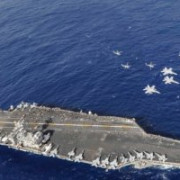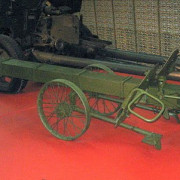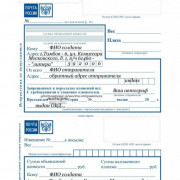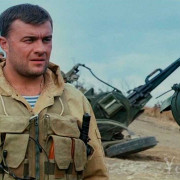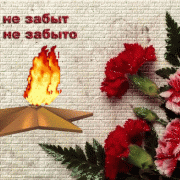Т-34
Содержание:
Историческая справка
Буквенно-цифровое сочетание «Т-34» используется компанией Wargaming.net в общеупотребимом значении для указания на реальные танки и прототипы Второй мировой войны и послевоенного времени. Компания Wargaming.net не использует буквенно-цифровое сочетание «Т-34» в качестве товарного знака для индивидуализации каких-либо конкретных товаров, работ или услуг, не является его лицензиатом и не связана договорными или иными отношениями с его правообладателями (АО «Научно-производственная корпорация «Уралвагонзавод», Баженский Михаил Юрьевич). Подробнее здесь
-
Основная статья: История Т-34-85
В 1943 году, в связи с массовым появлением у немцев новых моделей бронетехники с усиленным бронированием, эффективность 76,2 мм пушек стала резко недостаточной. В сражении на Курской дуге, в боях крупных масс танков, немецкое наступление удалось остановить, но лишь ценой огромных потерь собственной бронетехники, основную часть которой составляли к тому времени Т-34 и легкобронированные легкие танки Т-60 и Т-70. При этом, основные потери немецкая сторона несла не от огня советских танков, а от действий противотанковой артиллерии, от мин и т. д.
Это вынудило искать способы повышения боевых качеств Т-34. После проработки нескольких вариантов в массовое производство в 1944 году был запущен Т-34-85, вооружённый новой пушкой калибра 85 мм. Экипаж увеличился с 4 до 5 человек, танк получил новую башню с усиленным бронированием, более удобную для экипажа и командира. В результате масса выросла на несколько тонн, что привело к незначительному снижению динамических характеристик.
С принятием на вооружение завершающей модификации танка Т-34-85, все серийные танки Т-34, предшествующих выпусков, (образцы 1940÷1943 гг.), получили единое обозначение Т-34-76. В отличие от своего предшественника Т-34-76, Т-34-85, с пушкой С-53 (ЗиС-С-53), имел трехместную башню увеличенного размера (диаметр погона увеличен с 1420 до 1600 мм), что позволило увеличить объём боевого отделения, разместить более мощную пушку, дополнительного члена экипажа и освободить командира танка от роли наводчика, для более эффективного координирования действий экипажа.
Первые танки Т-34-85, постройки завода № 112, «Красное Сормово», с пушкой Д-5Т, имели двухместную башню, несколько отличающуюся конструктивно от башни разработки завода № 183. Пушка Д-5Т занимала много места, что не позволило разместить дополнительного заряжающего.
Вторая мировая война
Несмотря на ряд очень серьёзных усовершенствований Т-34, его боевые характеристики во второй половине войны нельзя было признать полностью удовлетворительными на фоне улучшения немецких танков и противотанковых средств.
Малоуязвимый в 1941 году для практически любых немецких танков и противотанковых средств (даже в старом варианте, более слабо вооружённом и бронированном), Т-34 в конце войны уже не способен был на равных противостоять тяжёлым немецким танкам и штурмовым орудиям (которые, впрочем, всё же имели далеко не абсолютное преимущество во всех ситуациях боя, не говоря уже о том, что относились к другому классу по массе, дороговизне производства, часто проигрывали в подвижности, не говоря уже об их количественном недостатке и технологических сложностях конца войны, сказавшихся, например, на качестве их брони). Т-34 оказался недостаточно защищён и от средств немецкой пехотной ПТО, включавшей к тому времени новейшие реактивные противотанковые гранатомёты, хотя немецкие танки не в меньшей степени страдали от огня гранатомётов типа «базуки» американского производства. В результате в 1945 году примерно 90 % попаданий в Т-34 приводило к пробитию брони. Это приходилось компенсировать их массированным и грамотным применением, причем ведущая роль в борьбе с танками противника перешла в заметной мере к тяжелым танкам, таким, как ИС-2, и САУ; тем не менее Т-34, оставаясь советским основным танком, сыграл неоценимую положительную роль во второй половине войны, что отчасти объясняется улучшением управления танковыми войсками, лучше налаженным взаимодействием с другими родами войск, особенно с авиацией, а также очень хорошей мобильностью и остававшимися всё же довольно достойными бронированием и огневой мощью. Не последнюю роль играла и увеличившаяся к этому времени надежность танка, и, конечно же, массовость производства. К концу войны Т-34 являлся самым многочисленным танком в армии СССР.
После 1945 года
После Второй мировой войны Т-34-85 активно экспортировался во множество стран мира и применялся в ряде военных конфликтов. Легендарные 34ки оставались на вооружении некоторых стран вплоть до конца XX века, и принимали участие во вьетнамской войне.
T-series Prototypes
The T29, T30, T32, and T34 series of tanks were used to evaluate numerous experimental components after World War II. Although too late for the war for which they were designed, they provided invaluable service in developing these components for later tanks. Much of the work making the early AV-1790 engine and the CD-850 transmission a reliable power package utilized these tanks. Later, these prototypes were used in the development of other power train components, such as the XT-1400 transmission, which was tested in the T30.
| Mk.VII | M6 | T28 | T29 | T30 | T32 | T34 | M103A2 | |
|---|---|---|---|---|---|---|---|---|
| Crew | 8 | 6 | 4 | 6 | 6 | 5 | 6 | 5 |
| Lenght | 10,43m | 8,43m | 11,12m | 11,56m | 10,9m | 10,83m | 11,77m | 11,23m |
| Width | 3,66m | 3,12m | 4,54m | 3,8m | 3,8m | 3,76m | 3,8m | 3,63m |
| Height | 3,12m | 3,00m | 2,86m | 3,22m | 3,22m | 2,81m | 3,22m | 3,56m |
| Weight | 39,5t | 57,4t | 86,3t | 64,25t | 64,74t | 54,5t | 65,2t | 58,1t |
| Enginepower | Liberty338hp | G-200960hp | GAF500hp | GAC770hp | AV1790810hp | GAC770hp | AV1790810hp | AV1790750hp |
| Max. speed | 8,8km/h | 35km/h | 12,8km/h | 35km/h | 35km/h | 35km/h | 35km/h | 37km/h |
| hull armour(angle) | 12mm(28) | 83mm(30) | 305mm | 102mm(54) | 102mm(54) | 127mm(54) | 102mm(54) | 127mm(60) |
| side armour | 12mm | 70mm | 152mm | 76mm | 76mm | 76mm | 76mm | 51mm |
| Turret armour(mantlet) | 16mm | 83mm(102mm) | — | 178mm(279mm) | 178mm(279mm) | 298mm(298mm) | 178mm(279mm) | 127mm(254mm) |
| top armour | 6-10mm | 25mm | 38mm | 38mm | 38mm | 38mm | 38mm | 38mm |
| bottom armour | 6-8mm | 25mm | 25mm | 25mm | 25mm | 25mm | 25mm | 38mm |
| Gun | 2x57mmHotchkiss | 75mm M737mm MB | 105mmT5E1 | 105mmT5E2 | 155mmT7 | 90mmT15E2 | 120mmT53 | 120mmM58 |
| Secondaryarmament | 5×7,62mmHotchkiss | 2×12,7mm HB M22x7,62mmM1919A4 | 12,7mmHB M2 | 3×12,7mmHB M27.62mmM1919M4 | 2×12,7mmHB M27.62mmM1919M4 | 12,7mmHB M22x7.62mmM1919M4 | 3×12,7mmHB M27.62mmM1919M4 | 3×12,7mmHB M27.62mmM37 |
Combat Performance Conclusions
A natural comparison can be made between the T-34 and the US M4 Sherman medium tank. Each tank formed the backbone of the armoured units in their respective allied armies. The T-34 was a «world-beater» at the time of its debut, while the Sherman was a strong contender when introduced in 1942. Both models were upgraded and improved extensively throughout their service life, receiving new turrets with more powerful guns. Both were designed for ease of manufacture and maintenance, even sacrificing some performance for this goal. Neither was a match for the German Panther or Tiger tanks in armour or firepower, but these heavy vehicles were both in a class more comparable to the Soviet IS-2 heavy tank or the American M26 Pershing
Tanks were expected to have many roles on the battlefield, the foremost being infantry support and exploitation. The tank-vs-tank role is nonetheless important. German tank production was limited to relatively small numbers of superior but complex vehicles (in part because of production diversion into self-propelled guns), which put them at a numerical disadvantage. The Soviet decision to build large numbers of T-34s, gradually improving and simplifying the design, proved to be a superior strategy that helped win World War II.
Other key factors diminishing the initial impact of T-34s on the battlefield were the poor state of leadership, tank tactics, and crew training, a consequence of Stalin’s purges of the Soviet officer corps in the late 1930s, aggravated by the loss of the best-trained personnel during the Red Army’s disastrous defeats in 1941. Many crews went into combat with only their basic military training plus seventy-two hours of classroom instruction. These problems were exacerbated by poor ergonomics and lack of radios during the early part of the war, making it practically impossible to coordinate tank units in combat. German tank soldiers found that the Soviet armor attacked in rigid formations and took little advantage of terrain. By 1943–44, these problems had largely been corrected.
Despite the many design issues, the T-34 had a very strong initial design allowing for all ongoing engineering to emphasis manufacturing improvements.
Modules
Guns
| Gun | Penetration(mm) | Damage(HP) | Rate of fire(rounds/minute) | Dispersion(m/100m) | Aiming time(s) | Weight(kg) |
Price() |
||
|---|---|---|---|---|---|---|---|---|---|
| IV | 76 mm L-11 | 68/75/38 | 110/110/156 | 12.24 | 0.51 | 2.9 | 660 | 25990 | |
| IV | 76 mm F-34 | 86/102/38 | 110/110/156 | 15.79 | 0.46 | 2.3 | 1155 | 30550 | |
| V | 57 mm ZiS-4 | 112/189/29 | 85/85/95 | 26.09 | 0.34 | 2.3 | 740 | 41480 | |
| V | 76 mm S-54 | 125/156/39 | 115/110/165 | 10.53 | 0.41 | 2.9 | 1390 | 40130 |
| Engine | Engine Power(hp) | Chance of Fire on Impact(%) | Weight(kg) |
Price() |
||
|---|---|---|---|---|---|---|
| V | V-2 | 480 | 15 | 750 | 18750 | |
| VI | V-2-34 | 500 | 15 | 750 | 27860 |
Suspensions
| Suspension | Load Limit(т) | Traverse Speed(gr/sec) | min | Weight(kg) |
Price() |
||
|---|---|---|---|---|---|---|---|
| IV | T-34 mod. 1941 | 30 | 37 | B/2 | 8000 | 2680 | |
| V | T-34 mod. 1943 | 31.3 | 40 | B/2 | 8000 | 7960 |
Establishing and maintaining production
The T-34 posed new challenges for Soviet industry. It was the most heavily armoured medium tank produced to that point, and subassemblies originated at several plants: Kharkov Diesel Factory No. 75 supplied the model V-2 engine, Leningrad Kirovsky Factory (former Putilov works) made the original L-11 gun, and the Dinamo Factory in Moscow produced electrical components. Tanks were initially built at KhPZ No. 183, in early 1941 at the Stalingrad Tractor Factory (STZ), and starting in July shortly after the German invasion at Krasnoye Sormovo Factory No. 112 in Gorky. There were problems with defective armour plates, however. Due to a shortage of new V-2 diesel engines, the initial production run from the Gorky factory were equipped with the BT tank’s MT-17 gasoline-burning aircraft engine, and inferior transmission and clutch. Only company commanders’ tanks could be fitted with radios, which were expensive and in short supply. The L-11 gun did not live up to expectations, so the Grabin design bureau at Gorky Factory No. 92 designed a superior F-34 76.2 mm gun. No bureaucrat would approve production, but Gorky and KhPZ started producing the gun anyway; official permission only came from Stalin’s State Defense Committee after troops in the field sent back praise for the gun’s performance.
There was political pressure from conservative elements in the army to redirect resources into building the older T-26 and BT tanks, or to cancel T-34 production pending completion of the more advanced T-34M design. This political pressure was brought to bear by the developer of the KV-1 and IS-2 tanks which were in competition with the T-34. (Political pressure between designers and factories producing different tanks to meet the same requirements continued much later post-war, including a period when the T-55, T-64, T-72, and T-80 were in concurrent production at several factories with differing political patrons on the supreme council of the USSR. Germany’s surprise attack against the Soviet Union in June 22, 1941 (Operation Barbarossa) forced the Soviet Union to freeze further development, and shift into full production of tanks.
Germany’s rapid advances forced the monumental evacuation of tank factories to the Ural mountains. KhPZ was re-established around the Dzherzhinski Ural Railcar Factory in Nizhny Tagil, renamed Stalin Ural Tank Factory No. 183. The Kirovsky Factory was evacuated just weeks before Leningrad was surrounded, and moved with the Kharkov Diesel Factory to the Stalin Tractor Factory in Chelyabinsk, soon to be nicknamed Tankograd (‘Tank City’). Voroshilov Tank Factory No. 174 from Leningrad was incorporated into the Ural Factory and the new Omsk Factory No. 174. The Ordzhonikidze Ural Heavy Machine Tool Works (UZTM) in Sverdlovsk absorbed several small factories. While these factories were being moved at record speed, the industrial complex surrounding the Stalingrad Tractor Factory produced forty percent of all T-34s
As the factory became surrounded by heavy fighting in the Battle of Stalingrad, the situation there grew desperate: manufacturing innovations were necessitated by material shortages, and stories persist that unpainted T-34 tanks were driven out of the factory into the battlefields around it. Stalingrad kept up production until September 1942.
Barring this interruption, the only changes allowed on the production lines were to make the tanks simpler and cheaper to produce. New methods were developed for automated welding and hardening the plate, including innovations by Prof. Evgeny Paton. The design of the 76.2 mm F-34 gun Model 1941 was reduced from the earlier model’s 861 parts to only 614. Over two years, the production cost of the tank was reduced from 269,500 rubles in 1941, to 193,000, and then to 135,000 (Zaloga & Grandsen 1984:131). Production time was cut in half by the end of 1942, even though most experienced factory workers had been sent to the battlefield and replaced by a workforce that included 50% women, 15% boys and 15% invalids and old men. At the same time T-34s, which had been «beautifully crafted machines with excellent exterior finish comparable or superior to those in Western Europe or America» were much more roughly finished, although mechanical reliability was not compromised.
Combat performance
T34 advancing with infantry at kursk.jpg
The T-34 is often used as a symbol for the effectiveness of the Soviet counterattack against the Germans. The appearance of the T-34 in summer 1941 was a psychological shock to German soldiers, who had been prepared to face an inferior Soviet enemy; this is shown by the diary of Alfred Jodl, who seems to have been taken by surprise at the appearance of the T-34 in Riga
The T-34 could take on all 1941 German tanks effectively. However, the new tank suffered severe problems, e.g. from engines literally grinding to halt due to dust and sand ingestion — the original Pomon filter was almost totally ineffective — and some serious mechanical troubles beset its transmission and clutch. At least half the first summer’s total tank losses were due to breakdowns rather than German fire, although this also included old tanks in disrepair. There was a shortage of repair equipment, and it was not uncommon for early T-34s to go into combat carrying a spare transmission on the engine deck. The mechanical troubles were eventually sorted out.
ARV (right) towing a disabled T-34 at the Battle of Kursk.jpg
During the winter of 1941–42, the T-34 again dominated German tanks through its ability to move over deep mud or snow without bogging down. German tanks could not move over the same terrain the T-34 could handle. The Panzer IV used an inferior leaf spring suspension and narrow track with a tendency to sink in deep mud and snow.
The German infantry, at that time armed mostly with PaK 36 37 mm (1.46 in) antitank gun, had no effective means of stopping T-34s. During the Battle of France the Pak 36 had earned the nickname «Door Knocker» due to its inability to penetrate anything but the lightest tank armour, though it worked very well at announcing the presence of the gun crew. Needless to say, crews of these weapons fighting on the Eastern front also found it severely underpowered for engaging Soviet tanks, often having to rely on heavier towed firepower, such as the relatively rare but effective Pak 38, the newer and much heavier Pak 40 and especially the 88 mm Flak guns that could not be moved into location as easily. Only the poor level of Soviet crew training, the ineptitude of Soviet commanders, and the early distribution prevented the T-34 from achieving greater success.
The emphasis in the Red Army in 1942–43 was on rebuilding the losses of 1941 and improving tactical proficiency. T-34 production increased rapidly, but the design was «frozen»—generally, only improvements that sped production were adopted. Soviet designers were well aware of the need to correct certain deficiencies in the design, but these improvements would have cost production time and could not be implemented. By mid-1943 T-34 production was running at about 1,000 tanks per month, much higher than the German rate.
In response to the sheer number of T-34s appearing on the battlefield and the ever growing need for heavier firepower, the Germans were beginning to field very large numbers of the high-velocity PaK 40 75 mm gun, both towed and self-propelled. These made up most of the anti-tank artillery by 1943. By late 1942 and into mid 1943 Germany had also begun to field the revered Tiger heavy tank and Panther medium tank, which further increased the need for an improved T-34. These improved versions came in two notable forms: an uparmoured version in 1943 that incorporated greater fuel capacity, reliability, and a modified turret; and a 1944 version with a new turret carrying a form of the 85 mm ZiS AA/AT gun. This last greatly increased firepower over the previous 76.2 mm F-34 cannon and finally gave the T-34 a better offensive capability
The T-34-85 in early 1944 gave the Red Army a tank with better armour and mobility than German Pzkw IV and Sturmgeschütz III, but it could not match the Panther in gun or armour protection. To the Soviet advantage there were far fewer Panthers than T-34s, and the T-34-85 was good enough to allow skilled crew and tactical situations to tip the balance.
At the outset of the war, T-34 tanks amounted to only about four percent of the Soviet tank arsenal, but by the war’s end, they comprised at least 55% of the USSR’s output of tanks.
By the time the T-34 had replaced older models and became available in greater numbers, newer German tanks, including the improved Panzer V ‘Panther’, outperformed it. The Soviets’ late-war Iosif Stalin tanks were also better-armed and better-armoured than the T-34.
T-34 from factory 112 destroyed at the Battle of Prokhorovka 1943.
Т-34-85М в игре
Боевая эффективность
В общей совокупности достоинств и недостатков преобладают достоинства. Танк в первой линии атаки благодаря хорошей альфе, пробитию, присутствию брони уверенно уничтожает любые танки 4-6 уровней. Со второй и третьей линий пробивает голдовыми подкалиберами танки 8 уровня. Танк обладает потенциалом к получению медалей Колобанова, Пула.
- Достоинства:
- бронирование лба корпуса позволяет держать удар большинства танков 5-го и ниже уровней, а если ее еще и доворачивать под нужным углом, позволяет танковать танки уровнем выше;
- хорошая скорость поворота башни;
- хорошая бронепробиваемость орудия;
- средний ДПМ среди национальных собратьев (лучше только у А-43);
- лучшая маскировка среди национальных собратьев.
- Недостатки:
- средняя динамика;
- частое критование двигателя;
- плохая стабилизация орудия.
Экипаж
Для начала изучаем всем Ремонт, а командиру Шестое чувство. После, учим «профильные» умения — Плавный поворот башни и Плавный ход для улучшения стабилизации, Радиоперехват для улучшения обзора и на выбор либо Бесконтактную боеукладку, либо Отчаянного для заряжающего, хотя первое всё же пригодится больше. Улучшаем все характеристики танка, изучив всем Боевое братство. Далее — очередь Маскировки. Пятым умением изучаются умения для улучшения обзора, маневренности и увеличения огневой мощи в некоторых ситуациях.
Оборудование, снаряжение и боекомплект
ББ42
БПспец10
ОФ8
- Оборудование
- Досылатель — уменьшит время перезарядки орудия.
- Просветленная оптика — увеличит дальность обзора.
- Улучшенная вентиляция — улучшит все основные характеристики танка.
- Снаряжение
Стандартный набор снаряжения — огнетушитель, ремкомплект и аптечка.
- Боекомплект
Основную часть боекомплекта составляют бронебойные снаряды, имеет смысл возить несколько специальных подкалиберных снарядов для встречи с бронированными противниками. Осколочно-фугасные стоит загружать для легкобронированных противников, сбития захвата или добивания противников с малым запасом прочности.
История изменений
-
Основная статья: История изменений Т-34-85М
История изменений
- Обновление 0.9.3
Для тестирования участниками Супертеста добавлен новый советский средний танк VI уровня Т-34-85М.
- Обновление 0.9.5
- Введён на основной сервер в качестве акционного советского среднего танка VI уровня Т-34-85М.
- Исправлена ошибка камуфляжа на танке Т-34-85М.
- Обновление 0.9.17.1
- Снаряды заменены на снаряды от Т-34-85 «Rudy»:
- Снаряд УБР-365К (160/126) заменён на УБР-365КБМ (180/144).
- Снаряд УБР-365П (160/167) заменён на УБР-365ПБМ (180/194).
- Снаряд УОФ-365К (280/43) заменён на УОФ-365БМ (300/44).
- Обзор увеличен с 350 до 360 м.
- Разброс от движения и поворота ходовой уменьшен с 0,24 до 0,22 м на 100 м.
- Разброс орудия уменьшен с 0,42 до 0,37 м на 100 м.
- Время сведения уменьшено с 2,5 до 2,2 с.
- Обновление 1.0.0
Машина стала доступна для продажи во внутриигровом магазине.
- Обновление 1.9
- Стоимость ремонта уменьшена на 11%.
- Прочность изменена с 720 до 810 единиц.
Technical info
Originally, the T29, T30, and T34 heavy tanks were all to be powered by the Ford GAC engine. However, after VJ-day, the program was modified to permit the evaluation of other new power plants, and the military characteristics of the T30 were changed to specify the Continental AV-1790 engine, which was still coupled to the cross-drive transmission. On 7 November 1946, US Army recommended that the two T34 prototypes use the T30 chassis and that the characteristics of the T34 also be changed to specify the Continental engine. Prior to this, it had been intended to use the modified Allison V-1710 aircraft engine. However, use of the two chassis diverted from the T30 prototype program was recommended to reduce costs.
The T34 prototypes were similar in appearance to the T29 and T30 tanks, except for the longer barrel of the 120mm gun. Like the T29, the combination gun-mount was fitted with two coaxial .50 caliber machine guns on the left side of the cannon. The heavier weight of the 120mm gun required the welding of an additional four inches of armor onto the rear of the turret bustle to balance the long cannon. On the pilot tanks, this provided an obvious identification point. No doubt, if the tank had gone into production, the rear of the turret casting would have been thickened up and it would not have been so easily detected.
Like the 120mm antiaircraft gun from which it was developed, the T53 cannon used separated ammunition. Thus, the ammunition stowage in the T34 was similar to that in the T29 and T30 tanks, which used the same type of round. The 120mm projectile and cartridge case each weighed about 50 pounds, so the problem of the two loaders in handling the ammunition was not as severe as with the 155mm gun in the T30. However, another problem arose during test firing at Aberdeen and Fort Knox: tests revealed that dangerous concentrations of smoke and carbon monoxide formed inside the turret after firing a few rounds. Also, flarebacks hospitalized at least two men at Fort Knox, and singed the hair and eyebrows of several others there and at Aberdeen. These flarebacks were caused by unburned powder gases in the gun tube being sucked back into the turret by the pumping action of the ejected cartridge case. A flash resulted when these hot gases mixed with the oxygen in the turret.
To prevent the flarebacks, a bore scavenging system was developed using compressed air to sweep out the gun tube before the breech opened. However, this complex arrangement resulted in leaks at the various valves, and required space for an air compressor and reservoir. A simple solution to the problem was the installation of an aspirator-type bore evacuator. Previously tested on the 90mm T15E4 and M3E4 cannons, it consisted of a cylindrical chamber fitted around the gun barrel just behind the muzzle. Holes angled towards the muzzle were drilled along the barrel wall and connected the bore with the evacuator chamber. As the projectile moved down the tube past these evacuator ports, the high gas pressure in the bore also pressurized the evacuator chamber. Once the projectile cleared the muzzle, the pressure in the bore dropped rapidly and the high pressure remaining in the evacuator chamber caused the formation of high velocity gas to jets from the evacuator ports. These jets angled toward the muzzle, sweeping the powder gas out of the bore before the breech opened. Tests at Aberdeen and Fort Knox showed that this simple device was extremely effective and it became a standard feature of new tank guns.
Crew Skills
- Repair as the first skill for all the crew members is a solid choice, allowing broken tracks or other damaged modules to be brought to operational condition as quickly as possible. Camouflage is also quite viable due to the T-34’s already good innate camouflage values. This can help when flanking, allowing it to remain undetected longer.
- A more specialized set of first skills would be Snap Shot (Commander/Gunner), Smooth Ride (Driver), Situational Awareness (Radio Operator). The loader only has perks available, which are not useful until they have reached 100%, Repair or Camouflage are viable options for the loader, which may later be swapped out for his perks. The combination of Snap Shot and Smooth Ride act like a Vertical Stabilizer (which the T-34 does not have access to), reducing the accuracy penalties while moving or turning the turret, and by extension, allowing the T-34 to get an accurate shot off faster after stopping. Situational Awareness increase the tank’s 350 m view range further. Recon may also be used instead of Snap Shot if the emphasis is on enhancing spotting capability. Smooth Ride may be substituted with Off-Road Driving for improved overall mobility. Clutch Braking is generally not as useful, as the T-34 already has excellent hull traverse.
- Upon reaching 100% on the first skills, dropping the commander’s skill for Sixth Sense is highly advised, as it is one of the most important perks in the game, especially for a medium tank. The loader’s skill may be dropped in favor of Safe Stowage or Adrenaline Rush. Safe Stowage will be beneficial if one plans to move this crew further up the research branch, since high tier Soviet vehicles generally have low ammo rack durability. However, Adrenaline Rush is highly situational that only activates upon 90% of its HP pool has depleted; any further penetration, even one from 37mm gun will kick the T-34 out of battle, making its effectiveness further limited.
- Brothers-in-Arms is a good perk to have on any tank, but requires all crew members to have it at 100% before it works. The bonus to crew skills is particularly noticeable when combined with Improved Ventilation. It improves nearly every aspect of the tank’s performance, but is generally better saved for later in favor of more important skills and perks like Repair and Sixth Sense.
Early Research
- The 57 mm ZiS-4 is the best overall gun and imperative for an early increase in firepower. One might have already unlocked it on the T-28. Otherwise, prioritizing it is a good idea.
- The T-34 Mod. 1942 turret dramatically increases the T-34’s view range, turret traverse speed, and most importantly; the rate-of-fire, so it makes a good module to research after the gun.
- The stock Mod. 1940 suspension has enough load limit for all of the modules, if used with the 57 mm ZiS-4. However it is inexpensive and offers a massive improvement to terrain resistance, improving your speed more than the engine upgrade.
- If you came from the A-20 you may have the V-2-34 engine already unlocked. If not, you can opt to skip this entirely; while it does improve your acceleration a little, it will be unlocked for free with the T-34-85. Use your judgment to decide if the small upgrade is worth grinding an extra 5000 XP.
- The 76 mm S-54 is required to unlock the T-34-85, but like all the other T-34 weapon options is inferior to the 57mm.
Историческая справка
-
Основная статья: История T34
В начале 1945 года в целях увеличения огневой мощи танков Артиллерийский Департамент изучил возможность использования 120 мм зенитной пушки Т53. Выяснилось, что эта пушка по бронепробивающим возможностям превосходила уже использовавшиеся пушки – 105 мм Т5Е1 и 155 мм Т7. В ходе испытательных стрельб применялся тестовый 120 мм бронебойный снаряд Т20Е3, который при весе 23 кг имел начальную скорость 945 м/с., кроме того в разработке находился подкалиберный боеприпас HVAP с начальной скоростью 1 249.68 м/с. В итоге, согласно ОСМ 27662 от 17 мая 1945 Артиллерийский Департамент рекомендовал установить 120 мм пушки на два пилотных танка Т30 и переименовать их в тяжёлый танк T34. 31 мая 1945 эта рекомендация была одобрена.
Изначально T34 должен был унаследовать от своих предшественников T29 и T30 двигатель Ford GAC. Однако после победы над Японией программа создания новых танков изменилась в сторону испытания новых силовых установок. Танк T30 получил двигатель Continental AV-1790. 7 ноября 1946 появилась рекомендация, чтобы пилотные T34 использовали базу Т30 и соответственно двигатель Continental , как на T30. До этого на T34 намеревались установить модифицированный авиационный двигатель Allison V-1710, однако новая рекомендация основывалась на стремлении удешевить разработку новой машины, используя корпус T34.
Внешне тяжёлый танк T34 не отличался от танков T29 и T30, не считая более длинного 120мм ствола (7,67588м). Как и на танке T29 слева от пушки было два .50cal спаренных пулемёта. Возросший вес пушки вынудил для баланса приварить к задней стенке башенной корзины противовес в виде брони толщиной 10,16 см.
120 мм танковая пушка Т53 унаследовала от зенитки раздельное заряжание. Размещение боеукладки в T34 оставалось таким же, как в T29 и T30 с необходимыми изменениями под больший калибр. Полный вес тестового выстрела составлял 50 кг, снаряда — 23 кг. Боекомплект состоял из 34 выстрелов. Скорострельность с двумя заряжающими – 5 выстрелов в минуту. 120 мм пушка Т53 на лафете Т125 имела вертикальные углы наведения от +15 до -10 градусов. Полный оборот башни на 360 градусов осуществлялся за 20 секунд. Стабилизатора орудия, как например на M26 Pershing, новый танк не имел. Пушка оснащалась телескопическим прицелом Т143Е2 и перископическим М10Е10, а для стрельбы с закрытых позиций – азимутом Т19, квадрантом М9 и квадрантом наводчика М1.
Окончание боевых действий мгновенно сказалось на проекте. Поскольку уже не стоял вопрос о закупке для армии тяжёлого танка T34, то создание новых боеприпасов было свёрнуто ещё до закрытия проекта T34.
